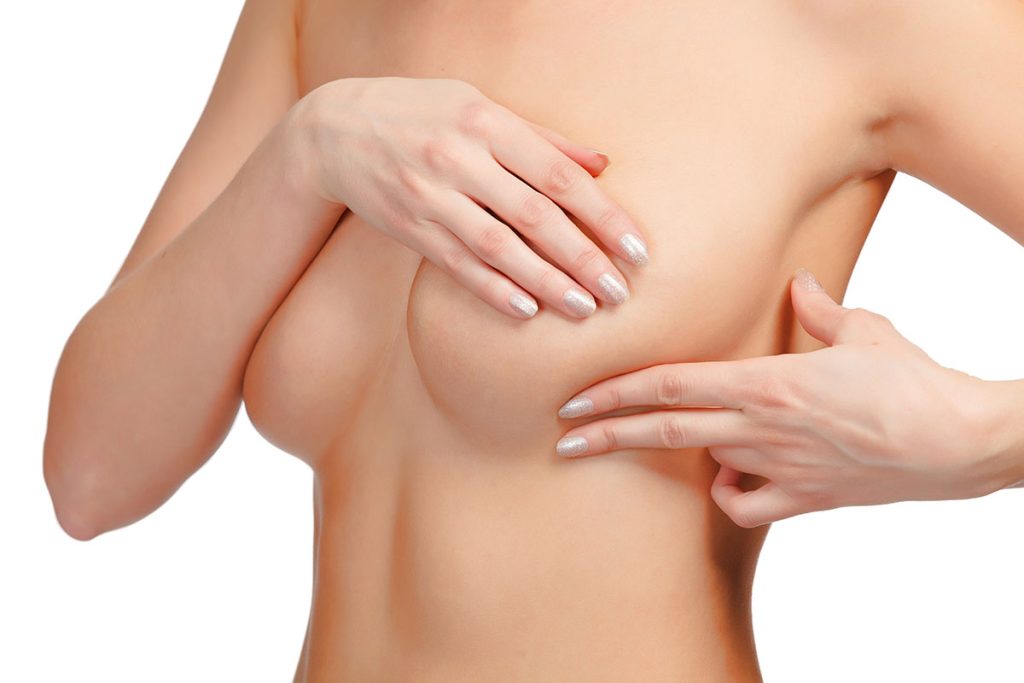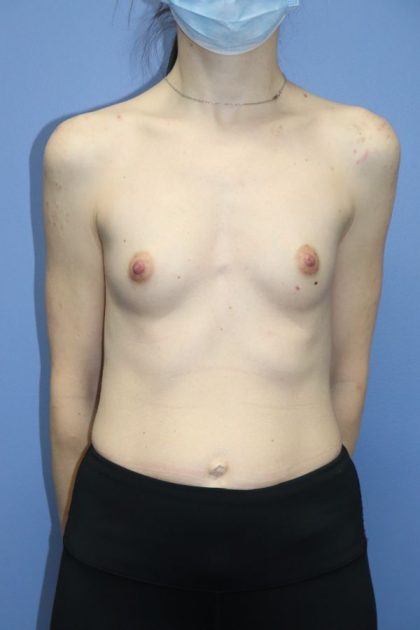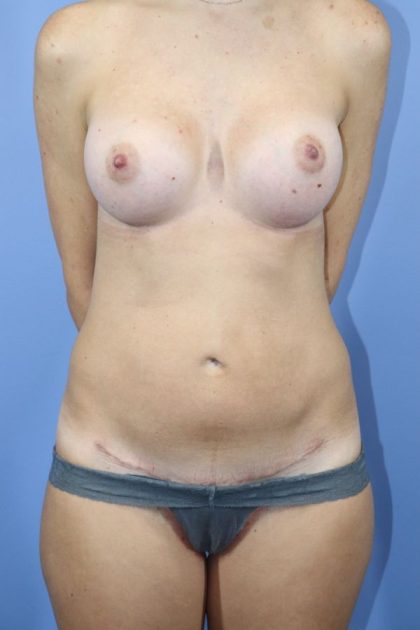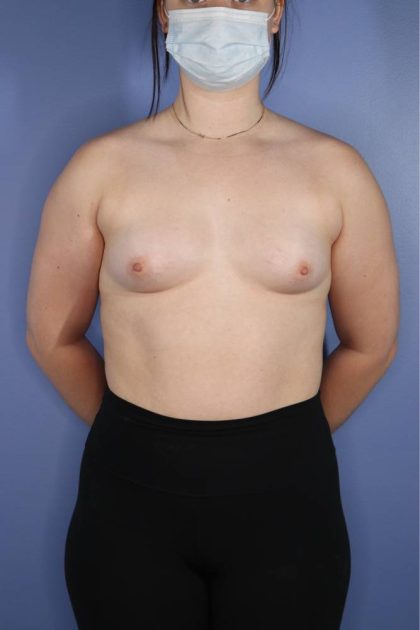Infection following a breast procedure is rare. However, if it does occur, there are ways to mitigate the problems that arise. Usually, healing after standard breast augmentation and breast reconstruction after mastectomy occurs as expected and presents no long-term effects. Patients follow post-surgery protocols and achieve their desired aesthetic goals. But in a small percentage of cases, bacteria and other microorganisms can infiltrate the skin barrier and cause a surgical site infection (SSI).
In minor infections, symptoms can include fever, redness, swelling, and discomfort. But, depending on the pathogen, the patient’s immune response, and how quickly they receive specialist care, serious, life-threatening complications can arise. Therefore, breast augmentation experts urge patients who notice the telltale signs of infection to act fast.
Speak to a medical professional as soon as possible to stop breast implant infection in its tracks. Book your consultation with Dr. Michael Howard, board-certified plastic surgeon and expert in breast augmentation, breast revision, and reconstruction in Lake Forest and Chicago, IL. Contact us to book your appointment by calling (224) 271-4250 or by filling out this form.
Contents
Before and After Photos
Risk Factors
Infection following breast surgery is uncommon. And, with an estimated incidence rate between 1–2.5%, (1) there are preoperative, perioperative, and postoperative factors to consider. Certain populations are more susceptible to developing an infection, and in some cases, there may be more than one root cause.
Preoperative Factors: The Patient
The following conditions increase the risk of developing an infection after surgery.
- Obesity
- Diabetes Mellitus
- Renal Failure
- Active Skin Disorders
- Tobacco Use (2)
Additionally, there are some breast-specific procedures and treatment modalities that carry a higher risk. These include the following.
- Mastectomy
- Axillary Dissection
- Chemotherapy
- Prior Radiation Treatment
- Reoperation (2)
Intraoperative Factors: The Procedure
What happens in the operating room can also affect tissue healing and increase the probability of developing an infection. Lymph node dissection, significant blood loss, tissue deoxygenation (ischemia), and procedures over two hours in duration are all known risk factors. (1)(2)
Postoperative Factors: Recovery
Patients who experience the onset of certain symptoms after their surgery are at an elevated risk of developing a post-breast implant surgery infection. They include people with:
- High blood glucose levels
- Seroma (surface fluid build-up)
- Hematoma (Bad bruising)
- Surgical drain placement (3)
Reconstructive Surgery
SSI rates are higher following breast reconstruction. Several year’s worth of data has been compiled which reflects these findings. One of the main reasons why cancer survivors’ risk of developing an SSI is that their body’s immune response is weakened due to radiation therapy and chemotherapy. One study showed that the infection rate after reconstruction is between 1.5% to 12%. (4) A further study indicated that, though infection can occur later in the timeline, around 60% of post-reconstructive surgery infections happen soon after surgery. (5)
Know the Signs of Breast Implant Infection
- Breast Pain – Tenderness in the breast and/or armpit may be acute or chronic. Frequently, patients with SSI experience marked pain, especially during breast palpitation, raising of the arms, or twisting of the body.
- High Fever – A high fever is a strong indication your body is producing an immune response to the infection. You may also feel fatigued and “drained.” Although an above-average temperature may be due to something else, it’s important to rule out breast implant infection, especially if other symptoms are present.
- Swelling (Erythema) – It’s normal to experience swelling after a surgical procedure. However, significant swelling and continuous swelling should be checked out by a doctor. A buildup of clear fluid known as seroma is common after surgery, which may cause discomfort.
- Redness – Unusual redness in the breasts could indicate infection. In some cases, a skin condition known as cellulitis may develop, which causes skin that is warm to the touch, and rapid advancement of redness and swelling across tissue in a short timespan. Seek an immediate medical assessment, as this condition can progress rapidly, and be serious, even life-threatening, without treatment with antibiotics.
- Discharge – Following any surgery, fluid discharge is to be expected, and your doctor may place surgical drains. However, where an infection has developed and advanced, there may be discolored, foul-smelling discharge at the wound site. Seek an immediate medical assessment, as an advanced infection with discharge is serious, potentially life-threatening, without treatment with antibiotics.
What Causes the Infection?
Infection is the most common cause of surgical readmission after breast implant surgery. (2) But what germs cause it? Although there are many hundreds of pathogens that cause infection in the human body, in actuality, only six account for the majority of cases:
- Staphylococcus Epidermidis
- Staphylococcus Aureus
- Escherichia
- Pseudomonas
- Propionibacterium
- Corynebacterium. (2)
Treatment for Breast Implant Infections
Medication
Several medications can be used in the treatment of breast implant infections. Most are oral antibiotics. The success of treatment with antibiotics depends largely on how advanced the infection is, the patient’s immune response, and how resistant the strain of bacteria is to the chosen medication. Dr. Howard stresses the importance of following dosage recommendations and completing the full course of antibiotics for the best outcomes. If antibiotics are ineffective in resolving the infection, Dr. Howard may recommend removal of the implants.
Tissue Removal
Where an infection has advanced and caused significant tissue damage, Dr. Howard may perform a surgical procedure to remove the tissue.
Revision Breast Augmentation
A revision breast augmentation or revision breast reconstruction may be an option when medication alone is inadequate to fight the infection. Implant revision or removal is also an option for patients experiencing other issues such as capsular contracture, neuroma, and implant position change. Dr. Howard asks patients interested in a breast augmentation revision to speak with him in person at a personal consultation for a full examination and assessment of their symptoms.
Personal Consultation
First and foremost, it is important to see a doctor as soon as possible if you suspect your breast implants may be infected. Dr. Howard advises patients to contact our office at their earliest convenience to schedule an appointment.
At your personal consultation, we may inquire about the following.
- Your medical history
- Your history of prior infections (especially cellulitis)
- Your current and past health conditions
- Your prior breast surgery experience
- The ease/difficulty of your recovery
- Any treatment you have received for breast cancer (where indicated)
- Your breast implant type
- The symptoms you are currently experiencing.
As well as gathering the relevant information, Dr. Howard will perform a physical examination of your breasts, and note any unusual redness, swelling and/or discharge. He may ask you to rate your discomfort and ask you to describe when you feel discomfort, in what area(s) of the breast, and how frequently it occurs. After the physical exam, Dr. Howard will draw up an individualized treatment plan to fight the infection and help you get back to feeling well again.
Cost of Breast Revision in Lake Forest, IL
Breast infection can arise in a small number of cases every year. But just because it’s rare, doesn’t mean all patients are protected. The cost of treatment will vary according to your individual circumstances after a full examination by Dr. Howard. To book your personal consultation, please call (224) 271-4250 to book at his Lake Forest or Chicago office.
To find out more about why you should choose Dr. Michael Howard for your breast surgery, please visit our website.
FAQ
Can breast implant infections be serious?
Yes. Any infection poses a threat to your body. Infections left untreated can cause serious, sometimes life-threatening health concerns. Infection following breast augmentation or breast reconstruction requires immediate evaluation by a doctor.
What is the main sign of breast implant infection?
A major warning sign is tissue warmth in the area, particularly if it is accompanied by rapidly advancing redness, swelling, and increasing levels of discomfort. In advanced cases of breast implant infection, there may be cloudy, foul-smelling fluid discharge in which case, the patients should seek prompt medical attention.
Can breast implant infection happen years after a procedure?
Although it’s not as common, yes. Although most cases of implant infection are surgical site infections that occur in the weeks after surgery, some patients may experience breast implant infection months or even years after their surgery.
References
- Dartaha, R., Brimo Alsaman, M. Z., & Jobran, A. W. M. (2022). Late infection of a breast prosthesis with staphylococcus aureus in a healthy woman: a case report. Journal of Surgical Case Reports, 2022(3), rjac067. https://doi.org/10.1093/jscr/rjac067
- Cohen, J. B., Carroll, C., Tenenbaum, M. M., & Myckatyn, T. M. (2015). Breast Implant–Associated Infections. Plastic and Reconstructive Surgery, 136(5), 921–929. https://doi.org/10.1097/prs.0000000000001682
- Mesa, F., Cataño, S., & Tuberquia, O. (2021). Study of Infections in Breast Augmentation Surgery with Implants in 9,691 Patients over 5 Years. Plastic and Reconstructive Surgery Global Open, 9(8), e3752. https://doi.org/10.1097/GOX.0000000000003752
- Franchelli, S., Vassallo, F., Porzio, C., Mannucci, M., Priano, V., Schenone, E., Leone, M. S., Canavese, G., Santi, P., & De Maria, A. (2012). Breast Implant Infections after Surgical Reconstruction in Patients with Breast Cancer: Assessment of Risk Factors and Pathogens over Extended Post-Operative Observation. Surgical Infections, 13(3), 154–158. https://doi.org/10.1089/sur.2011.004
- Yeo, H., Lee, D., Kim, J. S., Eo, P. S., Kim, D. K., Lee, J. S., Kwon, K. T., Lee, J., Park, H. Y., & Yang, J. D. (2021). Strategy for salvaging infected breast implants: lessons from the recovery of seven consecutive patients. Archives of Plastic Surgery, 48(2), 165–174. https://doi.org/10.5999/aps.2020.01578







